When we think of fruit trees, we usually picture ripe produce hanging delicately from leafy branches. But in some parts of the world, nature defies that norm in the most fascinating way. Certain fruits grow not on the outer tips of branches, but directly from the trunks or main limbs of trees—a botanical phenomenon known as cauliflory. This unique adaptation allows animals that can’t climb or fly to access the fruit easily, aiding in seed dispersal.
If you’re curious about these unusual growers, here’s a roundup of 13 of the most common fruits that grow directly on tree trunks.
1. Jabuticaba
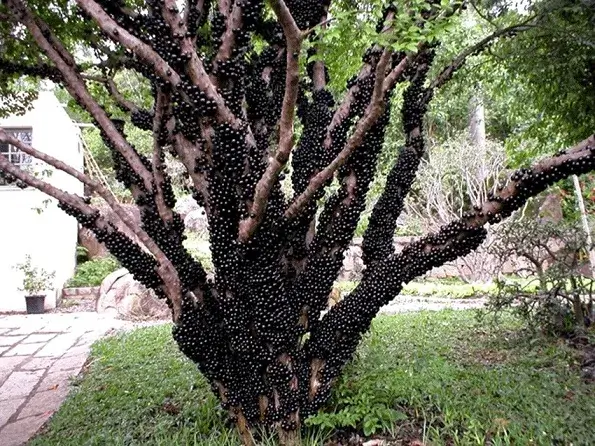
Native to Brazil, jabuticaba produces clusters of dark purple, grape-like fruits directly on its trunk—making it look as though the tree is studded with jewels. The sweet, musky pulp is encased in a thick skin rich in tannins. Often used in jellies, wines, and liqueurs, this fruit is both a culinary delight and a stunning natural oddity.
2. Cacao / Cocoa Tree
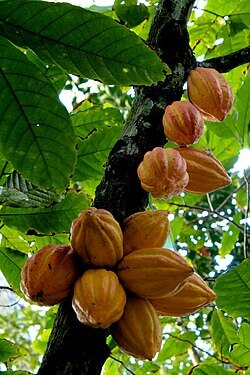
Famous as the source of chocolate, cacao trees bear large pods directly on their trunks and major branches. Inside each pod lie the seeds (cacao beans) surrounded by sweet pulp. Native to the Amazon, cacao’s cauliflorous growth makes harvesting easier and reflects its close relationship with ground-level pollinators like tiny midges.
3. Jackfruit
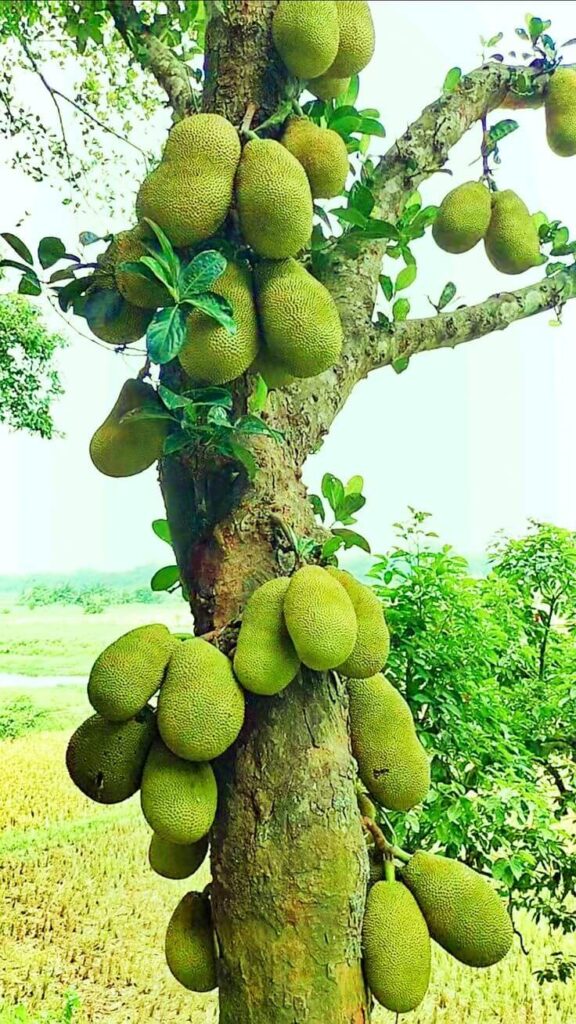
The jackfruit is the largest fruit borne on a tree, sometimes weighing over 80 pounds. Its spiky green exterior houses sweet, aromatic bulbs of flesh. Cauliflory is essential for this massive fruit, as the trunk offers the structural support needed to bear its weight. A staple in many South and Southeast Asian cuisines, it’s used both ripe and unripe.
4. Durian
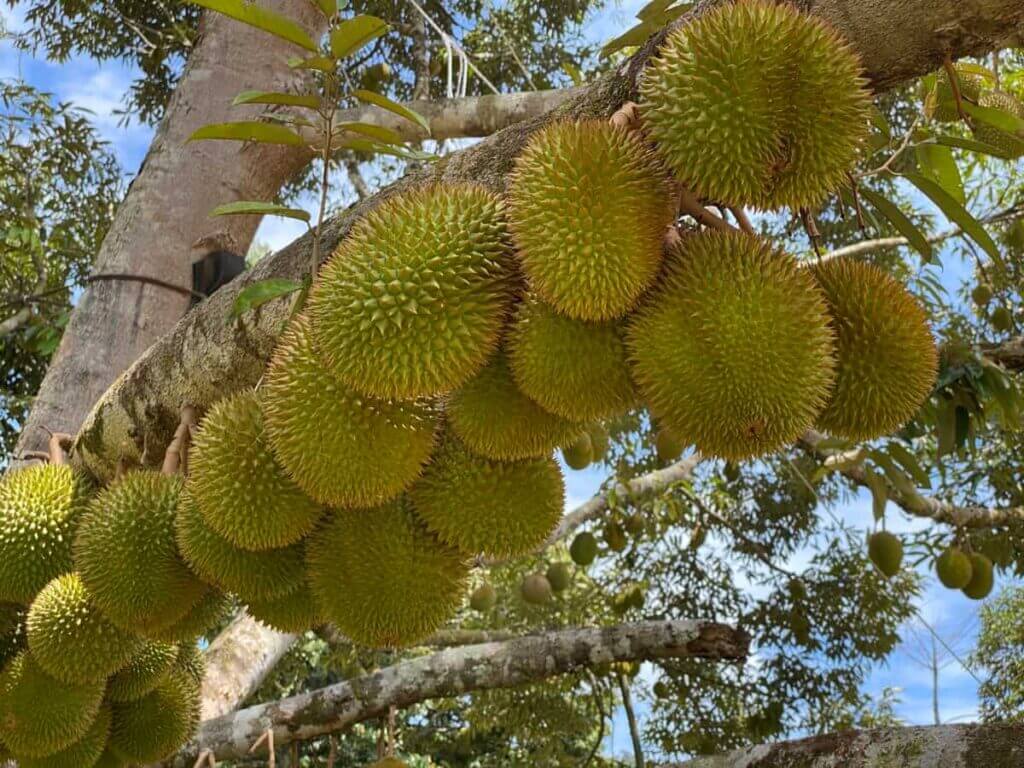
Often called the “king of fruits,” durian is famous for its polarizing smell and rich, custard-like flesh. Its large, spiny fruits grow directly on the trunk or major limbs, where the tree can best support their bulk. Native to Southeast Asia, it’s prized for its intense flavor and is the subject of both reverence and revulsion.
5. Breadfruit
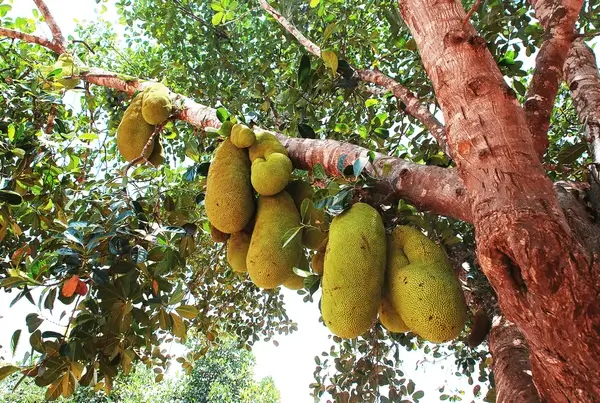
Breadfruit trees may bear fruits on thick branches or along the trunk, especially in older trees. The large, starchy fruit has a potato-like texture when cooked and is a vital food source across the Pacific Islands. Its cauliflorous tendency allows easy harvesting and supports heavy fruit loads during peak seasons.
6. Marang
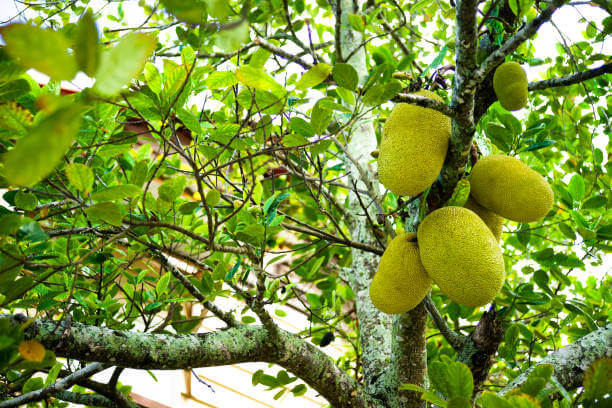
Closely related to jackfruit and breadfruit, marang produces oblong, spiky fruits that grow low on the trunk. Its flesh is creamy and intensely aromatic—often considered more delicate and superior in flavor to jackfruit. Native to Borneo and the Philippines, it’s highly seasonal and treasured locally.
7. Namnam
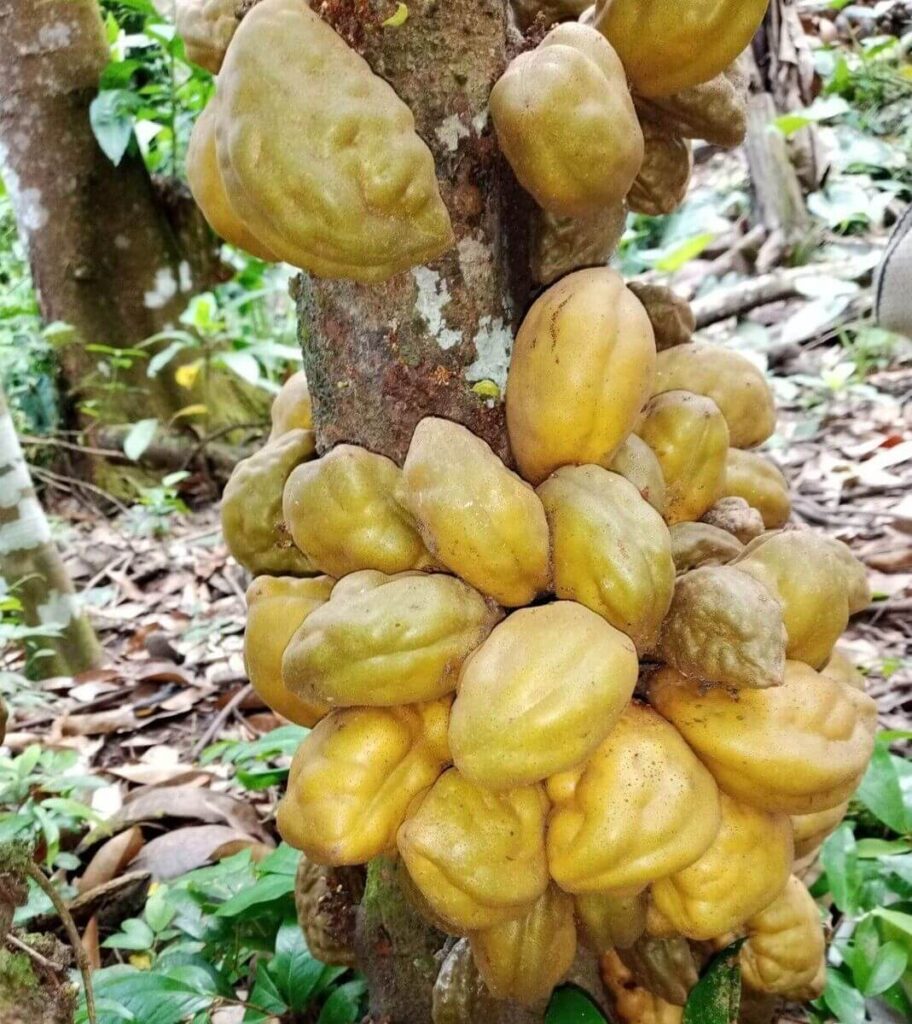
A lesser-known Southeast Asian fruit, namnam bears wrinkled, bean-like fruits directly on the trunk and larger branches. The pulp is sour and tangy, commonly used in pickles or as a cooking ingredient. The tree’s distinctive appearance—with fruit sprouting from its bark—makes it a botanical curiosity.
8. Papaya
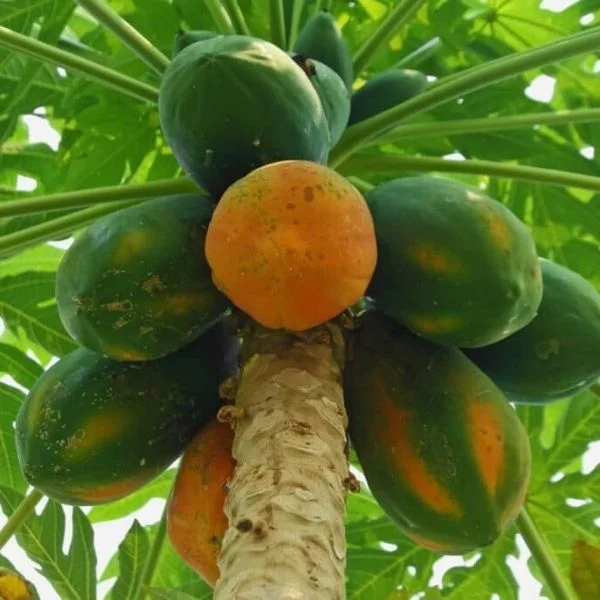
While not strictly cauliflorous, papaya often develops fruit close to its main trunk, especially near the crown. The fast-growing tree yields clusters of large, melon-like fruit with orange, enzyme-rich flesh known for its digestive benefits. In many tropical regions, it’s a staple fruit that matures rapidly and bears heavily.
9. Baccaurea spp. (Rambai)
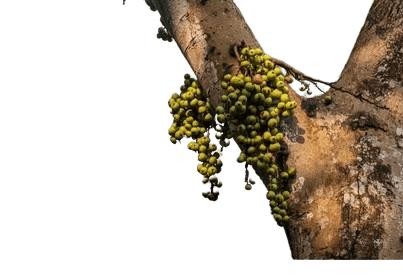
These Southeast Asian trees produce small, grape-sized fruits directly along the trunk. The fruits often grow in tight clusters, creating a dramatic appearance. The pulp ranges from sweet to sour and is eaten fresh or used in traditional dishes and preserves. Its striking trunk display makes it popular in local markets.
10. Langsat / Duku
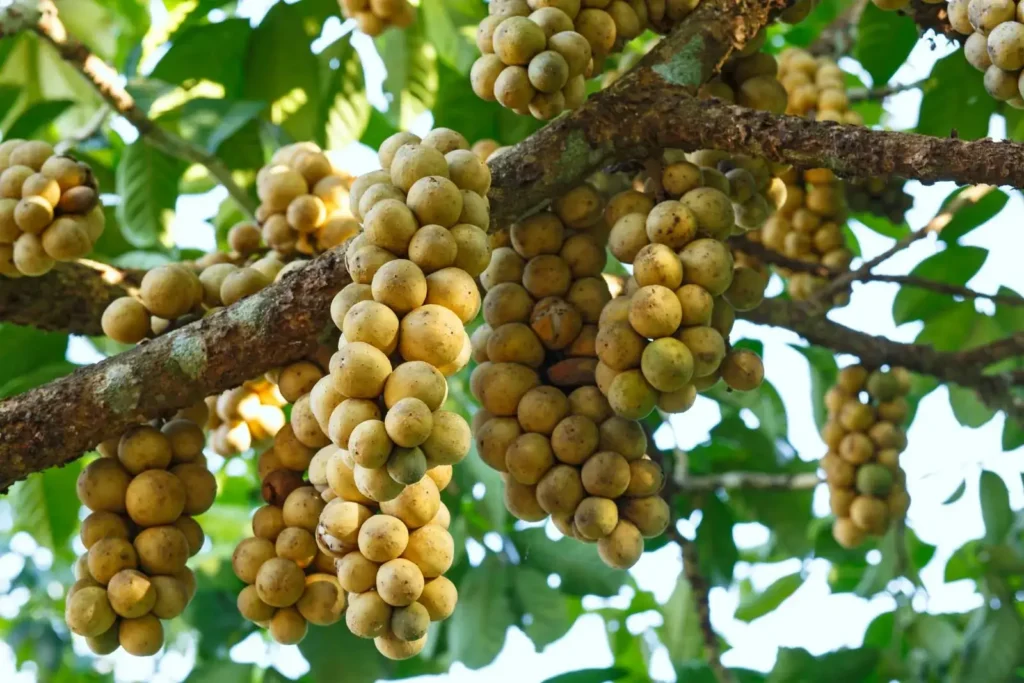
Langsat trees occasionally show mild cauliflory, with small clusters of pale yellow fruits emerging close to the trunk. The translucent, segmented flesh is sweet-tart and juicy, often compared to lychee or grapefruit. Native to Southeast Asia, it’s a beloved seasonal snack throughout the region.
11. Macambo
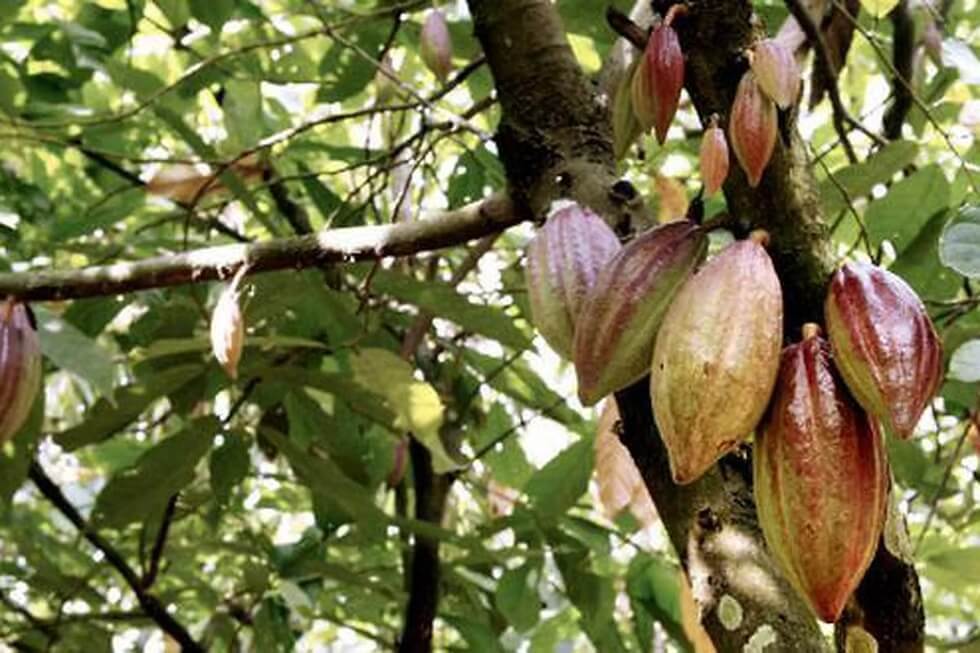
Also known as white cacao, macambo produces large pods similar to cacao directly from the trunk. Its seeds are edible when roasted and are higher in protein and fiber than regular cacao beans. Though lesser known outside the Amazon, it’s gaining attention as a sustainable and nutritious crop.
12. Imbe
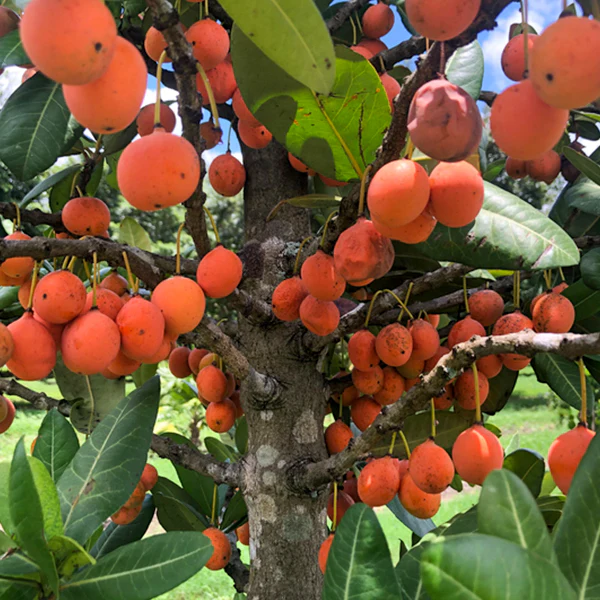
Native to Africa, imbe trees sometimes produce small, orange fruits along their trunks or lower branches. The fruit is tangy, with a mango-like flavor and chewy texture. It’s a wild fruit that’s both ornamental and edible, valued for its drought tolerance and vibrant color.
13. Cannonball Tree

This tree is more ornamental than edible, but its appearance is unforgettable. Native to Central and South America, it produces large, woody “cannonball” fruits directly from its trunk, alongside striking pink and yellow flowers. Though the pulp has limited edible use and a strong odor, it holds spiritual significance in parts of Asia.
